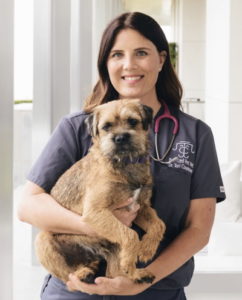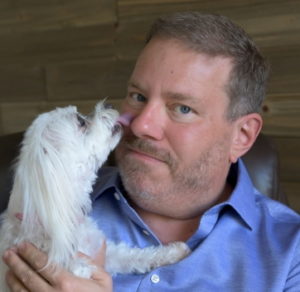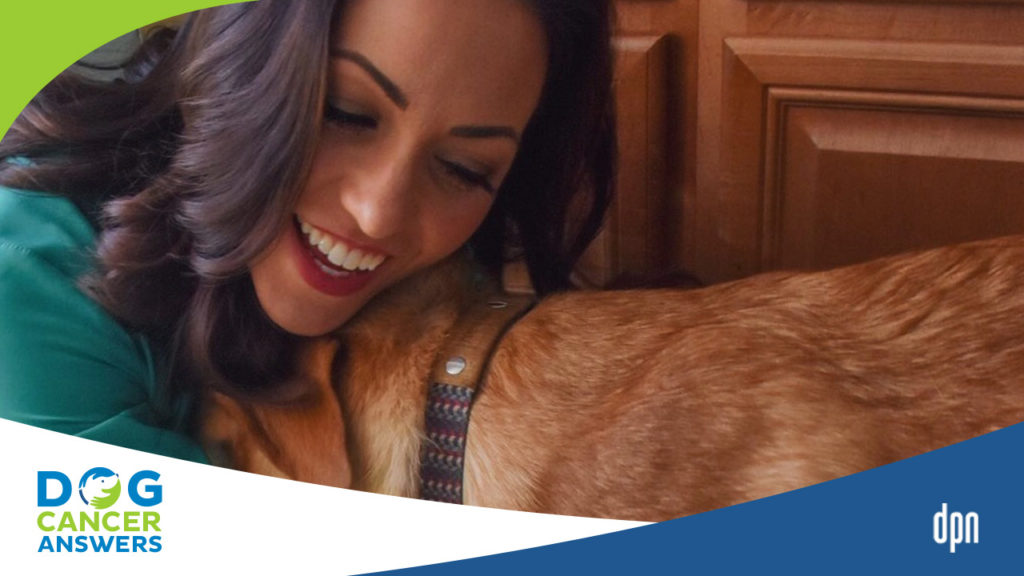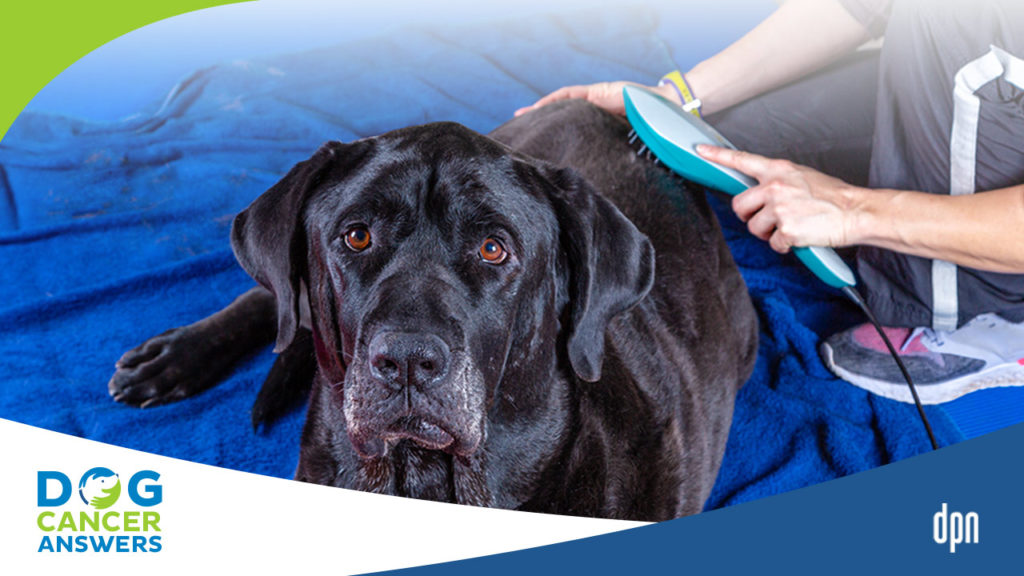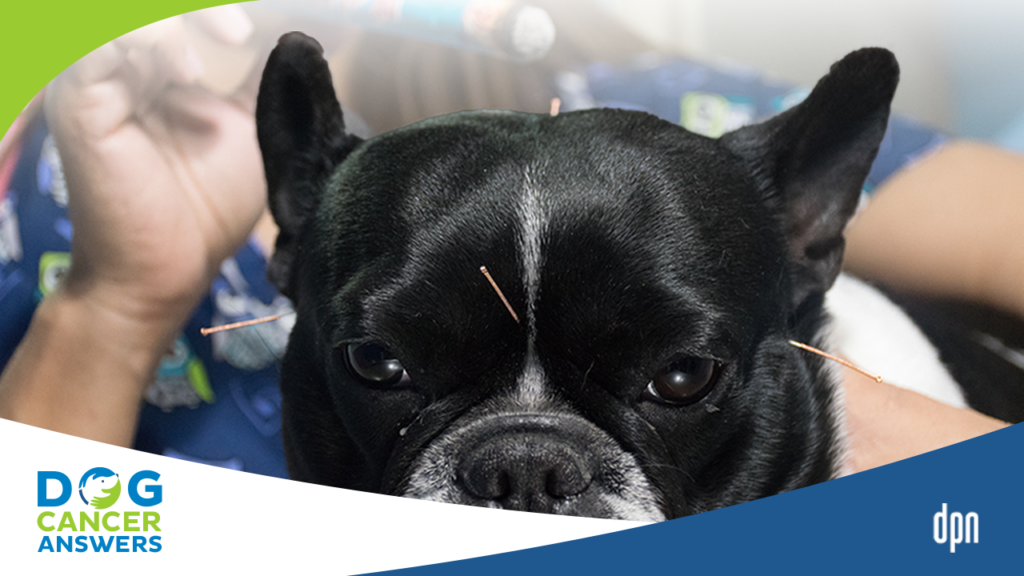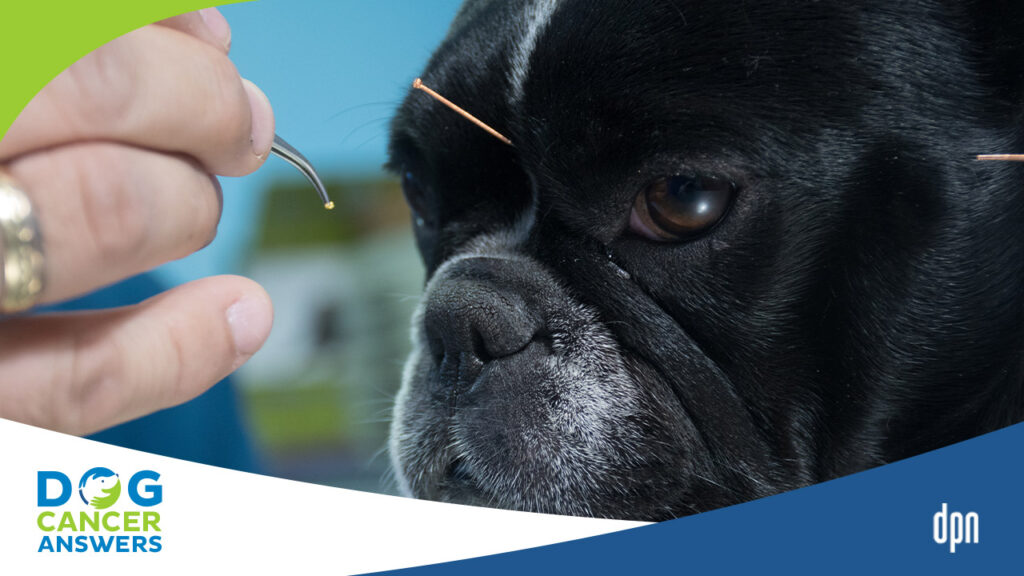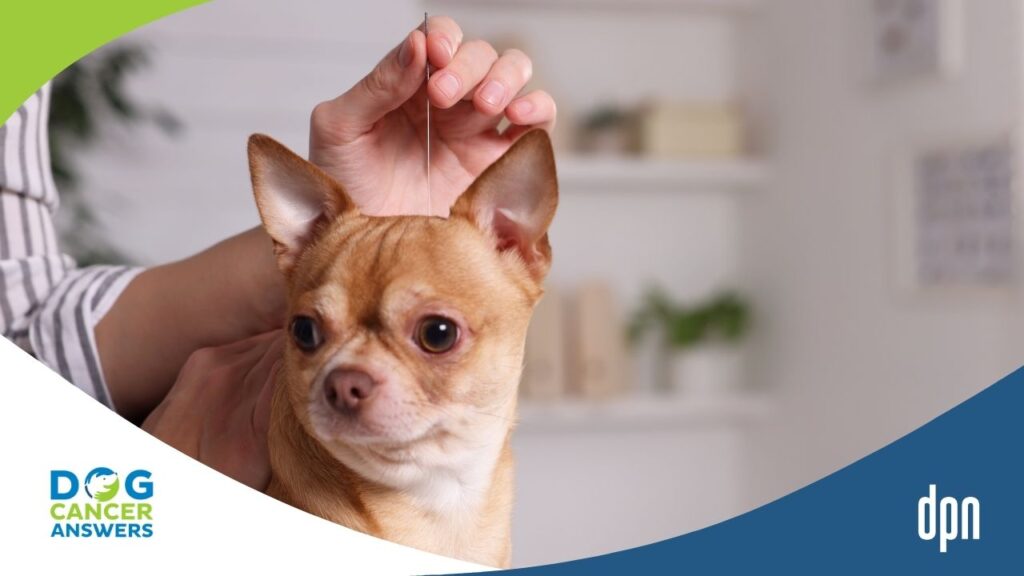EPISODE 71 | RELEASED July 31, 2020
Dog Acupuncture | Dr. Tori Countner Deep Dive
Dr. Tori Countner believes in a holistic approach and treatments to help alleviate your dog’s anxiety and pain. She works alongside standard Western treatments to increase quality of life through acupuncture, cold laser therapy, nutrition, supplements, and lifestyle changes.
SHOW NOTES
By looking at the whole picture of your dog’s situation, we can manage these problems through a combination of evolving treatments. And many of these can be accomplished at home—Dr. Tori believes in evaluating and responding to your situation as a team.
Links Mentioned in Today’s Show: Dr. Tori’s website The Balanced Pet Vet https://www.balancedpetvet.com/about
>> James Jacobson: >> Dr. Tori Countner. Thank you for being with us today.
>> Dr. Tori Countner: Thank you for having me.
>> James Jacobson: So you are in Southern California.
>> Dr. Tori Countner: Yes.
>> James Jacobson: And that is where you practice medicine just in San Diego or just outside of San Diego?
>> Dr. Tori Countner: So I’m in San Diego and I also go up once a month to Los Angeles to see clients up there. Cause that’s where I started my veterinary career. And just recently moved to San Diego.
>> James Jacobson: But you had an interesting pre career before you started in veterinary medicine?
>> Dr. Tori Countner: Yes, I was in the art world. I worked in a gallery and I worked in a museum for a few years before deciding to follow my passion to become a veterinarian.
>> James Jacobson: So tell me a little bit about that Odyssey, ’cause that seems like kind of a journey to go from being in the art world to being in veterinary medicine.
>> Dr. Tori Countner: It was, yeah. I was Art History undergrad and I came back to LA and like I said, worked in the art world for a little bit. And I just absolutely love animals and decided I wanted to go into the veterinary profession. So I had to take two years of, you know, prerequisites. Chemistry, Bio, starting at Chem 101, Bio 101. So I felt a bit of a, like a fish out of water.
So I did that for two years and then I got accepted to Kansas State University and was there for four years and then came back to Los Angeles to do a rotating internship at ASEC in LA, then went into private practice for a while and then started my company Balanced Pet Vet about two years ago in LA. Where I do acupuncture and a little bit of integrative medicine. And then recently moved to San Diego.
>> James Jacobson: Do you think that Balanced Pet Vet has sort of the full spectrum approach in part because of your background in the arts?
>> Dr. Tori Countner: That’s a great question. Possibly. I love looking at the whole picture. You know, I’m a very visual person. So if a dog comes in for an ear infection, I want to look at the whole dog. I want to see, well, what’s causing it? I don’t want to just treat the ear infection. Is there something underlying, can we prevent this ahead of time?
You know, being in Southern California, we have things blooming all year round. So I feel like it’s, allergy season all year round. And so how can we look at the whole picture? And even what goes on at home, the environment, travel, stressors, you know, new babies, moving, all of that. So yeah, looking at the whole picture and trying to get a sense of where it all begins, essentially.
>> James Jacobson: And you focus a lot on quality of life. And I would imagine as an extension of that, that’s why you see so many dogs who have cancer. Are you the one diagnosing it or do they come to you after they have a diagnosis?
>> Dr. Tori Countner: They come to me after they have a diagnosis. I basically come in and supplement their regular DVMs or their specialists kinda protocol, um, or overall health. So once I see patients with cancer, they’re usually pretty far progressed. They have a diagnosis. They’ve either been through chemotherapy or radiation. Or a lot of osteosarcomas, you know, bone cancers, they have just gone through an amputation. Or if they’re not a good candidate for amputation, they come to me with ‘What else can we do? How can we manage their pain? How can we give them the best quality of life with the little time that they have left?’ So yeah, I see them once they’ve been diagnosed and have a treatment plan from their regular veterinarian.
>> James Jacobson: And so you’re being referred to from their oncologist and their general practice vet.
>> Dr. Tori Countner: Exactly.
>> James Jacobson: And so what are some of the tools that you rely on?
>> Dr. Tori Countner: The main tool that I rely on is acupuncture. I love acupuncture, I get it on myself. I really think it helps with balancing the body system. So that’s kind of my main tool that I have.
And I also have a cold laser therapy machine that can be used in most cases. Um, there are a couple of cancers or a couple of issues that we want to stay away from laser. But that’s a tool that I use for decreasing inflammation, helping circulation, easing muscle tension.
So those are my main two and also talking about nutrition. Lifestyle. So when I go into people’s homes, I do mobile consults. I look around and if there are a set of stairs or slippery floors or the food and water bowls need to be raised, we talk about small lifestyle changes that can be done in the home to help the pet. Supplements are great, you know, nutrition.
And also helping the owners. Sometimes they just want to talk about the hardships that they’re going through in trying to care for their pet, who has this diagnosis of cancer And, and helping hold their hand essentially, and just being there for them.
>> James Jacobson: So is your entire practice mobile?
>> Dr. Tori Countner: It is about 75% mobile, 25% in clinic.
>> James Jacobson: Okay. So let’s talk a little bit about some of these different modalities. Acupuncture.
Well, I’m going to guess, but it’s probably not something they taught K State.
>> Dr. Tori Countner: They did not, they did not. So I went to the Qi institute and did a six month program. It was a lot, you know, distance learning online. And there were about three to four long weekends that we went back to the Qi Institute in Florida to get trained. So that was really exciting just to learn a totally new way of looking at the animal and helping the animal.
>> James Jacobson: Walk us through with what that’s like. The first session and then how regular these sessions are and how long they last and the needles and all that good stuff.
>> Dr. Tori Countner: The biggest question I get is ‘how do the animals stay still for acupuncture’ and half of them do and half of them don’t. And so, you know, but they really, the needles stay in and as long as you get the needles in, then you know, you’re getting the job done.
So basically the first session is a little bit longer. Cause I go over the history and we talk about the animal, you know. I do a big physical exam and then I talked to the owner about expectations. So, you know, with those certain ailments it really all depends on what’s going on with the dog or cat. I have a couple of cat clients.
BUt I always suggest just try at least three acupuncture appointments, ideally a week apart or every other week. Because you will start to see the effects if it is really going to help after three or four sessions. So if they can just hang with it for a couple of sessions, then they can really see the results. A lot of my clients say that the dogs and cats feel better within 24 hours after the appointment.
>> James Jacobson: So how did the– I mean, so these are obviously very much, I imagine the same acupuncture needles that one would use for human, which are really, really small and I’ve had acupuncture and it doesn’t hurt that much. You do feel it, though.
>> Dr. Tori Countner: They feel it, yeah.
>> James Jacobson: How do the dogs cope?
>> Dr. Tori Countner: So a lot of them, I have to say a lot of my Golden retrievers and Labs, they absolutely love it. But then the rest of my patients, they, they all react differently.
So what I try and do is, you know, once I kind of have my plan in place and the different points along the meridians that I want to place some needles, and I’ll place about five. ou know, anywhere from 5 to 25, depending on the animal, the ailment, all of that. So what I do is kind of pinch the skin and pinch the fur, just kind of scratch it a little bit so that they’re aware that I’m about to touch that area. And then I place the needle. Sometimes they don’t feel it, but if they do, it’s usually just a split second, and then they relax. I do that with each point, I kind of just manipulate and put pressure on that point before I insert a needle.
>> James Jacobson: Getting into the Meridian piece for a moment, because I think that’s something, if you’re not familiar with acupuncture is like, ‘Huh? Meridian?”
>> Dr. Tori Countner: So yeah, in Chinese medicine there are channels or meridians along the body that correspond to certain organ systems. So when I went to the Qi Institute, we learned the meridians. And along those meridians are , there are certain points that correspond to, again, you know, specific organs or ailments. Like I was saying before: Pain points, appetite, stimulant, relaxation, that type of thing. So learning all of those channels and points is a lot, but, you know, it’s really helpful in placing needles in terms of–
>> James Jacobson: I’m going to ask. So how many, I’m sorry, how many meridians are there in the dog?
>> Dr. Tori Countner: In the dog it’s the same as humans and the ones that I use there’s about 12 to 14 channels are meridians. And along those are anything from like 20 to like 60 points along those channels.
>> James Jacobson: But dogs are so different in size. And, I mean, I understand conceptually, but a Maltese’s meridians are going to be way different than a Golden’s meridians. How do you find them?
>> Dr. Tori Countner: You know, once you–and I show a lot of clients in person. Because once they figure out, ‘Oh, okay, this bony prominence of the knee in a Great Dane, you’re going to go a couple like finger lengths below it to find a point.’ But in a Maltese that might just be a little bit of a hairline. So you really are looking for the bony landmarks. You know, hips, knees. Vertebrae are really easy to count. So the vertebrae along the back, you can feel those in the majority of dogs. And you can really pinpoint the same point on every dog, whether it’s a Great Dane or a Chihuahua. You know, just like we have elbows, chihuahuas have elbows. Great Danes, too. They’re all different sizes. But once you kind of feel those bony landmarks, you can get a sense of where those points are.
>> James Jacobson: Is there a sense that you are actually feeling on an energetic level the meridians? Or is it basically you’re looking for those landmarks and you just scale it for the size of the dog? Or is it a combination?
>> Dr. Tori Countner: When I first started out, you know, as a young vet, I definitely was like, ‘Okay, this is what the book tells me to do. I’m feeling. It’s logical. This is where it goes. So here’s the, you know, (yeah I dunno what this word is) Cornell, that elbow I’m feeling at this point. So it must be right there. But now, since I’ve been doing this for a long time, I can’t quite explain it, but I can sense where are they going to be sensitive? So it’s like feeling for that point. And I dunno if it’s just my finger’s drawn there, but I think that a lot of people will say that it just kind of comes intuitively.
And the dogs that I treat, or dogs in general. they’re just, I believe that they’re really in touch with their inner being and they’re less in their head a lot. So they’re just more down to earth. And so they kind of, their energy is easier to feel. When they’re not feeling well. Or a good trigger point or a spot to place those needles. We just kind of get a sense of where that is.
A lot of time I will, I mean, I still find those bony landmarks cause I have one patient that all she does is wag her tail and want belly scratches the whole mission. And so I need to just get the needles in her, get her to calm down and just so the needles are in her and doing their job.
>> James Jacobson: So how many needles might you place in? Obviously, each case is different based on the type of cancer, but how many needles would you put in a dog?
>> Dr. Tori Countner: Again it depends. And probably 10 to 15. And again, the range is usually 5 to 25, but in most patients I’ll do 10 to 15, I don’t want to overwhelm their system, especially if they are first time patients of mine or they have just gone through chemotherapy or radiation. You really can get the job, you know, what you need to do with five well-placed needles.
>> James Jacobson: How long do they stay in?
>> Dr. Tori Countner: Ideally they should stay in for 20 minutes. I try and push it to 30 minutes, but there are a couple of dogs that, they wag their tail and, you know, knock off some needles. They shake and needles go flying. So as long as you place the needle and you kind of see what we call a de qi response.? So sometimes the hair is kind of fluff fluff a little, but as long as you place that needle and get that tiny response, then you know, you’ve done something. When I was at the Qi Institute they said that cats will just kind of fling the needles out very quickly. So as long as you press that point and get that needle in that point, then you’re at least doing something.
>> James Jacobson: So a number of your dogs stay, and they’ll do it for the whole 20 minutes or something?
How do you keep them still? Are they restrained or are they just looking at you or are they getting treats or how are you doing that?
>> Dr. Tori Countner: A little bit of both. Like I said, usually my Lab or Golden patients, they will just sit on, you know, their, their dog bed or the couch or their favorite spot. I always work where they’re most comfortable. So the majority of the time I’m sitting on the floor in an awkward position and they’re the ones that are super comfortable and they’ll just lay in their beds. Um, a good trick is putting peanut butter or pureed pumpkin on a flat plate and freezing it. And so they’ll just lick that the whole time.
Other times they’re just kind of happy to be around me or if the owner is there, you know, we just kind of hang out with the dog and the dogs can stand up. You know, most of the time the needles do stay in. If they shake some needles go flying. So I always like to do it in a smaller room. So like a laundry room or when I’m in the clinic, you know, we have a small room. But not somewhere where there’s going to be a lot people coming in and out a lot of distractions.
Since Covid happened. I’ve been doing it a little bit more outside and that’s been a little bit more challenging. So I’ve done it in people’s garages to help reduce the distractions .
>> James Jacobson: That I was going to ask you about that. So you’re wearing a mask and you’re in their garage or you’re outdoors. And has that changed the efficacy any or the compliance with the animal?
>> Dr. Tori Countner: It hasn’t changed with the animal. What it has changed is trying to get a really good. history from the owners. It’s hard to talk through masks. I’m a quiet person by nature. So I feel like I’m yelling through my mask. And so that’s been a little bit more difficult, but the treatment has been great. And sometimes without the owners there, the dogs behave a little bit better. So that’s been easier to deal with patients that way.
>> James Jacobson: Is there a lot of eye contact during the process between you and the dog?
>> Dr. Tori Countner: Um, that’s a great question. If they’re laying down, I’m usually walking around them. BUt they’ll kind of like look right that if there’s a needle that, you know, causes a reaction, like a tingling or something. And so once I place all the needles, I usually just go up and pet their head or just make sure that they’re comfortable. Maybe do a little bit of massage. Twist some of the needles that I think are super important. And I also use laser therapy at that time, which is that cold laser therapy. And that I find is what really, really relaxes a lot of my patients.
>> James Jacobson: So what’s the cold laser therapy. What does that look like?
>> Dr. Tori Countner: The laser therapy uses photons or light to basically activate or excite cells. It’s called cold laser therapy, but it is kind of warm to the touch that–
>> James Jacobson: is it a gun? I mean, paint the picture for us.
>> Dr. Tori Countner: It’s a probe, like I’m holding a probe, but I use a non-contact bulb. So what, basically I hold it about an inch or two away from the patient. And if they have elbow arthritis or dysplasia, I set the machine to, you know, this dog is 60 pounds. He’s got a thick coat. I’m going to treat the elbow and the machine will calculate, okay, well for the size and the coats and the area, this is the amount of energy that we need to output in order to emit photons to the cells. THe cells, and the mitochondria basically pick up that photon energy. They give off ATP, which in turn increases healing. It helps decrease inflammation. It helps decrease pain. And it also just helps in general. I believe it helps really relax the muscles because the muscles get so tight around those areas of concern. So we can do that with the laser therapy machine and a little bit of massage as well.
>> James Jacobson: And you said it’s contact less. So how far away from the dog is the probe?
>> Dr. Tori Countner: About an inch. Okay.
>> James Jacobson: And then you do that after you put the needles in so they’re getting a little bit of both or do you just sometimes just do one or the other modality?
>> Dr. Tori Countner: So, yeah, I place the needles and then once the needles are in there, I do the laser therapy while they still have the needles in. Because I think it helps relax them. And also there’s a finite amount of time that dogs want to sit there, you know, so I have a good window of 30 to 60 minutes. Um, so the more efficient I can be, the better the treatment
>> James Jacobson: And how many treatments generally on average would you do?
>> Dr. Tori Countner: So starting off, I definitely recommend at least three to four treatments because it really builds upon itself. And then from there it’s case by case. For severe cases, again, if they’ve just had a severe diagnosis or chemotherapy or radiation, I usually say once a week. And then once they start to feel a little bit better, you know, every other week. A lot of my clients want to keep it weekly, but my goal is to get your dog to feel better so that I see you once a month. But a lot of people, they see the results and see how happy and their dog’s quality of life increase and so they liked to keep me at once a week. But again, my goal is to assume maybe once a month for tune-ups and you know, again, or, or as needed. So that’s what I recommend.
>> James Jacobson: Do the dogs generally smile, or they look happy when they see you coming in the door?
>> Dr. Tori Countner: They do! One of my first clients, she was this Black Lab that had a hip dysplasia, elbow arthritis, um, hemangiosarcoma. And she used to run away from me. I would say the first, like four to five times that I came to her house. But then by the sixth time she didn’t run. Seventh time she didn’t run. But by like the eighth time, she was so excited that I was there, I remember just like tearing up when she came to the door, wagging her tail. And so that was an indicator that she trusted me. She felt good. And she was super happy. So that was, that’s huge. Most of my client–
>> James Jacobson: So it’s like a spa treatment. It’s like thee massage therapist coming to the door with their table.
>> Dr. Tori Countner: Yeah. And so that was, that was just really great to see, you know. And she did, besides the fact that she was moving better and, you know, she lasted about three years after her hemangiosarcoma diagnosis, which was a huge win for us and the owners. And so it was just so nice to see that she was super happy and that’s all I want for my patients.
>> James Jacobson: Now let’s move a little bit away from the physical things you do to some of the things that you recommend nutrition-wise and supplement wise. You use MCT and CBD? That’s a lot of letters.
>> Dr. Tori Countner: It depends on the patients. And so I am loving CBD as long as there is a quality product that my clients are using. I think it’s great for. Inflammation. Anxiety. A lot of these dogs that don’t feel well or they’ve had chemotherapy or radiation or their life has changed and how they feel because of this cancer diagnosis, they get anxiety from it. They don’t know what’s going on. And so they’re just a little bit more on edge. So CBD really helps with that. I think there’re some studies coming out that it helps with cognition or brain health as they get older. So that’s really important.
MCT is great again for cognition, brain health. There’s a lot of great studies out there or dogs with seizures that MCT oil helps a lot.
Yeah nutrition wise. When dogs are going through cancer treatment, my main goal is to just get nutrition in them. So it’s going to be, um, decreasing their nausea, increasing their appetite. So how can we do that in terms of what’s their favorite food? How can we give them good nutrition? So just talking with the clients about that. I love whole real food from the ground from Mother Nature, but that’s not always possible with clients. Yeah. So how can we do that? Incorporating steamed veggies and fruits, lean meats into their kibble. Just getting those good nutrients to help with our nutrition, immune system, help them fight off this cancer. That’s, that’s my main goal.
>> James Jacobson: Let’s talk a little bit about the people. I imagine in Southern California, you have all kinds of people who are drawn to the full spectrum of approach that you dispense. But I imagine sometimes, maybe like a couple might not totally agree. Do you ever find it like, you know, the husband feels one way and the, the wife feels the other?
>> Dr. Tori Countner: Oh, definitely. I’ve definitely had differences of opinion. Um, yes, family members, you know, some that absolutely believe in acupuncture and laser therapy and changing up the nutrition. In that same family, they, they don’t believe in it.
I have had the, you know, those family members come around after they see. Oh yeah, like they went up the stairs, which they haven’t done in months. OR, you know, they went after a ball. No, it wasn’t fast, but they were happy enough and pain-free enough and excited enough to chase after a ball. So I usually win over the skeptical clients.
But yeah, I mean, even when I was going through vet school, not that I didn’t believe in it, but I just thought there was no place in it for veterinary medicine. So I love that my mind has been changed and that I can use both and that I can educate people. That’s, that’s super important to me to educate people on., yes, there is another option besides either, you know, letting your animal go or just having a terrible quality of life for the last month of their life.
>> James Jacobson: Any tips or suggestions for listeners who might be in a relationship where they and their partner disagree about the best approach and to help overcome the doubting Thomases?
>> Dr. Tori Countner: Yeah. I definitely think talking to your veterinarian or talking to, like you said, a full spectrum veterinarian to discuss what are the expectations, what are the outcomes? How can acupuncture, laser therapy or just small tweaks in their daily lives, how can that change and improve their dog’s quality of life. I think having an open and dialogue and communication. ANd also a lot of my clients are from word of mouth. And so talk to friends that have had acupuncture on their dogs and they’ll tell you, and they’ll, you know, explain it what the process was, what the timeline was, and get a little bit more education or a good reference on how acupuncture, these other alternative therapies can really help their dogs. So I think, yeah, having first hand experience or word of mouth is great.
And also acupuncture, like you, it’s supposed to balance the body. There’s no harm done. You can’t over balance the body. So I tell owners like worst case scenario is that nothing happens. So I think that’s kind of a relief of like, it’s a noninvasive procedure. Worst case scenario, nothing comes of it. So that will get them to try to at least a couple of times
>> James Jacobson: >> Dr. Tori Countner from The Balanced Pet Vet,. Folks want to get in touch with you, what’s the best way?
>> Dr. Tori Countner: Yeah, I’m I’m on social media and my website is Balanced Pet Vet Dot Com.
And you can email me at info at balanced pet dot com and reach out. I would love to help educate anyone on questions they may have about their animals.
>> James Jacobson: Dr. Tori, thank you so much for being with us today.
>> Dr. Tori Countner: Thank you for having me.
Hosted By
SUBSCRIBE ON YOUR FAVORITE PLATFORM
Topics
Editor's Picks
CATEGORY
